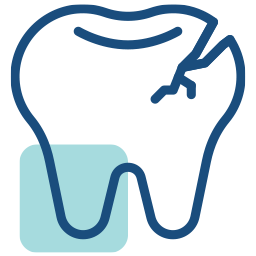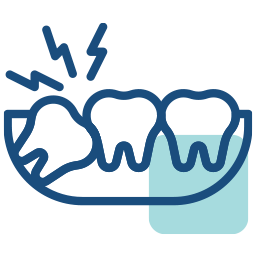ANCASTER
DENTAL CENTRE
Services
Dental Services
Looking for a new dentist in Ancaster? Treatment options are available for all your oral health needs. Procedures are available to bring out the best in your smile.
General Dentistry

Composite Fillings

Dental Bonding

Dental Bridges

Dental Crowns

Dental Extractions

Dental Implants

Dentures

Root Canal

Teeth Cleaning
Cosmetic Dentistry

Dental Veneers

Invisalign

Orthodontics

Teeth Whitening
Children Dentistry

Child's First Appointment

Fluoride Treatment

Orthodontics for Teens

Pediatric Treatment & Education

Teen Cleaning for Kids
Additional Services

Oral Cancer Screening

Sedation

Sports Guard

TMJ Therapy

Tooth Sensitivity Treatment

Wisdom Teeth Extraction
Dental Services
Looking for a new dentist in Ancaster? Treatment options are available for all your oral health needs. Procedures are available to bring out the best in your smile.
General Dentistry

Composite Fillings

Dental Bonding

Dental Bridges

Dental Crowns

Dental Extractions

Dental Implants

Dentures

Root Canal

Teeth Cleaning
Cosmetic Dentistry

Dental Veneers

Invisalign

Orthodontics

Teeth Whitening
Children Dentistry

Child's First Appointment

Fluoride Treatment

Orthodontics for Teens

Pediatric Treatment & Education

Teen Cleaning for Kids
Additional Services

Oral Cancer Screening

Sedation

Sports Guard

TMJ Therapy

Tooth Sensitivity Treatment

Wisdom Teeth Extraction

Implant In Ancaster Dental Centre
If one or more of your teeth are missing, there are a number of ways to replace them. An alternative to bridges, partials or complete dentures may be dental implants. Implants are used to replace missing roots and support artificial replacement teeth. They are comfortable and look like natural teeth.


A dental implant is inserted into the jawbone.

An abutment is attached to the implant. The abutment connects the artificial tooth to the implant.

An artificial tooth is attached to the abutment. Properly fitting the artificial tooth may take several appointments.

A fixed bridge is anchored to dental implants to replace one or more teeth.

A fixed bridge is anchored to dental implants to replace all teeth.
What are dental implants?
A dental implant is an artificial root made of titanium metal. It is inserted into the jawbone to replace the root of the natural tooth. An artificial replacement tooth is attached to the implant. The implant acts as an anchor to hold the replacement tooth in place.
Who does this procedure?
If you are having an implant, your dentist may refer you to a dental specialist who has further training in this area. Specialists who place implants are periodontists or oral and maxillofacial surgeons, also called oral surgeons. Specialists who place crowns, bridges and dentures on implants are called prosthodontists.
Who can get dental implants?
If you are in good general health, have healthy gums and have enough bone in the jaw to hold an implant, dental implants might be right for you. If your jawbone has shrunk or if it has not developed normally, you may be able to have a bone graft to build up the bone. A bone graft is a way of adding new bone to your jawbone. Your dentist or dental specialist will tell you if bone grafting can be done.
How dental implants are done?
-
- Your dentist or specialist will carefully examine your mouth and take x-rays of your head, jaw and teeth to find out if dental implants are right for you.
- During the first stage of surgery, your dentist or specialist will put a dental implant into your jawbone beneath the gum tissue. The gum tissue is then stitched back into place. As the tissue heals, the implant will bond with the bone and attach to the gum. It can take several months to heal.
- During the second stage of surgery and once the tissue is healed, your dentist or specialist will attach an abutment to the implant. An abutment is a post that connects the replacement tooth to the implant. In some cases, the first and second stage of implant surgery may be done in one single stage.
- An artificial replacement tooth is made and your dentist or specialist attaches it to the abutment. It may take several appointments to properly fit the replacement tooth to the abutment.
- When replacing several teeth or all of your teeth, a fixed bridge is anchored to your dental implants. A bridge is a dental restoration that replaces one or more missing teeth by spanning an area that has no teeth. The bridge is held firmly in place by dental implants on each side of the missing tooth or teeth.
Caring for my dental implant(s)
Because dental implants are placed in the jawbone, artificial replacement teeth attached to implants look and act much like natural teeth. Like natural teeth, implants need to be kept clean using a toothbrush and floss. Your dentist will show you the proper cleaning procedure for implants. Regular dental checkups are important so your dentist can make sure that your bite is right and that your implants are not loose.
What else should I know?
-
- Several visits to your dentist or dental specialist may be needed until the process is done.
- Checkups will be scheduled during the following year so your dentist can be sure your implants are working properly.
- You will need to take very good care of your implants.
- Implants can cost more than other kinds of replacement teeth and might not be covered by your dental plan. But in most cases this is a one-time cost, unlike other kinds of tooth replacement procedures.
- Although rare, possible complications due to dental implants include bleeding, infection, numbness or injury to nearby muscles or the sinus cavity. In some cases, the implant may not be successful because it didn’t bond to the bone.
* Source: Canadian Dental Association!


Invisalign In Ancaster Dental Centre

What is Invisalign treatment?
Invisalign Treatment is the process of wearing a series of clear, removable aligners that gradually straighten your teeth. No brackets and wires, and none of the restrictions that come with metal braces.
What are Invisalign clear aligners made of and what do they look like?
Invisalign clear aligners are made of flexible plastic — specifically, a patented thermoplastic material called SmartTrack created exclusively for Invisalign Treatment.
How will Invisalign treatment straighten my teeth?
Your Invisalign Doctor will create a unique, digital treatment plan that maps out the exact movements of your teeth. Your Invisalign clear aligners are then designed to apply the right amount of force to the right place at the right time based on your plan. Your Invisalign Doctor will be with you every step of the way to monitor your progress and ensure your aligners fit correctly.
What are the primary benefits of Invisalign treatment?
Invisalign clear aligners are virtually invisible — people may not even notice you’re wearing them. You can remove them to eat and drink, to brush and floss, or for special occasions. There are no metal brackets or wires that could irritate your mouth or break.
Unlike other brands, Invisalign clear aligners are made from patented SmartTrack material, which is more comfortable and provides a better fit. Invisalign aligners are also trimmed based on your gum line for comfort and appearance. As the most advanced clear aligner system in the world, we have successfully improved over 12 million smiles, including 3 million teen smiles.
Am I guaranteed to have straight teeth with Invisalign treatment?
Every smile is unique, which is why your Invisalign treatment starts with a consultation. During your consultation, your Invisalign Doctor will help you determine what Invisalign treatment could do for your smile. We cannot guarantee a particular treatment outcome but encourage you to share your treatment goals with your Invisalign Doctor at your consultation.
Is Invisalign treatment right for me?
Yes! Invisalign treatment can be a great solution for both adults and teens looking for a virtually invisible method to improve their smile. Our innovations and technological advancements make it possible to fix nearly all common teeth-straightening and bite issues, from simple to complex — all without interrupting your busy life. And, thanks to a discreet blue dot on the outside of teen aligners, parents can be sure their child is wearing their clear aligners enough.
What is the treatment process?
Invisalign Treatment starts with a consultation with an Invisalign-trained doctor. Your doctor will evaluate your smile and then map out a precise, customised digital treatment plan that showcases the step-by-step transformation of your smile. Once you approve your plan, your unique aligners will be created. You will wear each set of aligners for 20 to 22 hours a day, changing to a new set of aligners every 1 to 2 weeks, as directed by your doctor. Each set of aligners will gently and gradually shift your teeth into place, according to your treatment plan, until you reach your beautiful new smile.
How long does Invisalign treatment take?
Depending on the complexity of your case, you could complete your treatment in as little as 6 months. But you’ll start seeing results in a matter of weeks.
What are Invisalign clear aligners made of and what do they look like?
Invisalign clear aligners are made of flexible plastic — specifically, a patented thermoplastic material called SmartTrack created exclusively for Invisalign Treatment.
* Source: Invisalign.com!

Braces In Ancaster Dental Centre


What is Braces treatment?
Braces is the most common type of orthodontic treatment used by dentists or orthodontists.
How braces are done?
To apply braces, your dentist or orthodontist attaches brackets (or bands) to each tooth with glue. Archwires are fitted into all the brackets and are usually held in place with rubber or wire ties.
You may feel some discomfort for a while when your braces are first put on and when they are adjusted. It will take a little time to get used to your braces and they can bother your lips and cheeks. If this happens, a relief wax can be applied to your braces. To make eating easier after an adjustment, soft foods are recommended.
Caring for your teeth with braces
Proper brushing and flossing is even more important for people with braces because plaque can easily build up around the edges of your braces. If this plaque is not properly removed, white or brown marks may appear on the enamel surface of your teeth and these marks may be permanent.
Brushing and flossing with braces take longer. It is important to brush your braces as well as the front, back and chewing surfaces of the teeth. Your dentist or orthodontist will give you tips on how to brush and on how to floss using floss threaders. After flossing, roll it up in a tiny ball and put it in the garbage. Never flush floss down the toilet. Parents should supervise their children to make sure they do a good job cleaning their teeth and braces and follow the advice of their dentist or orthodontist.
Caring for your braces
If you have braces, do not bite on hard things such as ice cubes and nuts. Do not chew the ends of pens or pencils. Also avoid sticky treats like chewing gum or toffee because they can loosen braces, distort wires and even pull braces off your teeth. If any of these problems happen, you will need to have your braces repaired by your dentist or orthodontist.
If the elastics or ties come off the bracket, you may be able to put them back around the bracket using small tweezers. If a wire is sticking out and bothering your lip or cheek, you may be able to push it back into place with the rubber eraser end of a pencil or it may be carefully cut off with a nail clipper. When a problem happens, always contact your dentist or orthodontist to have your braces checked as soon as possible. Problems that are not fixed can cause the treatment to last longer.
Choices in braces
Today’s braces are smaller and less noticeable. Besides the traditional metal braces, there are tooth-coloured ceramic braces that are less noticeable. Clear aligners are also available for adults. Braces and elastics can also be multicoloured. Speak to your dentist or orthodontist about all your choices.
* Source: Canadian Dental Association!

